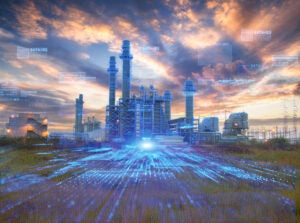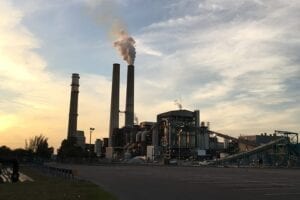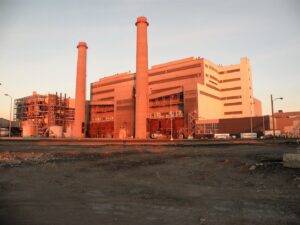Even with the end of hurricane season, America was once again reminded of the tragic and devastating impact that extreme weather and hurricanes can have on our communities. This hurricane season brought devastation, loss of life, and infrastructure damage comparable with some of history’s worst natural disasters. In September, for example, Hurricane Helene caused devastation far beyond the coastal regions of Florida, bringing torrential rains and flooding as far north as North Carolina and Virginia. The Category 4 storm, and the inland damage it caused, was the most lethal hurricane to hit the mainland U.S. since Katrina in 2005, killing more than 200 people, displacing thousands, and leaving millions without power.
The challenge for those of us who have dedicated our lives to the energy and utility industry is how to best transform our respective electric systems to provide reliable energy capable of powering the day-to-day lives of billions, while also being resilient enough to withstand extreme weather events. As was poignantly stated by the Coalition for Disaster Resilient Infrastructure, an initiative supported by the United Nations, “building the resilience of power infrastructure becomes all the more critical to provide reliable and sustainable services.”
Fortifying Systems
With respect to electric infrastructure, the total cost impact of Hurricane Helene, coupled with Hurricane Milton, which followed just over a week later, was estimated to be $50 billion each—and that’s just two hurricanes. Meanwhile, the World Economic Forum estimates the global cost of climate change damage to potentially reach $16 million per hour by 2050. Making plans today to ready our energy systems for more extreme weather is not only imperative for our society’s survival, but also for the ability to shield ourselves from severe economic consequences that follow when highly populated regions are left in the dark.
As we brace ourselves for the reality of a future with more powerful storms, the energy industry must focus on two priorities: engineering truly resilient energy systems in every community and addressing the growing global need for the engineers required to make this more resilient future happen. IEEE Power & Energy Society (PES), the world’s leading association of energy engineers, has embraced this call for collective action. Across the industry, engineers, like me, are engaging in unprecedented collaboration to better plan, design, and build climate-resilient power systems. In fact, we are working internationally to develop and adopt higher engineering standards for infrastructure resiliency and to embrace innovative solutions that help engineer the stronger grids of the future for utilities around the world. As a professional community, IEEE PES works to recognize and empower both experienced and emerging engineers making strides for the benefit of humanity—and we all must continue to support the growth of these careers.
Most of the public may not be aware that the complex energy systems that our societies rely on to power daily tasks are meticulously designed and tested by engineers. As such, building a more climate-resilient energy future across the globe will require a substantial increase in the number of engineering graduates. In their absence, the very pace of progress will dramatically slow. As a result, our nation’s—and the world’s—very ability to withstand the impact of climate change and better prepare for more extreme weather events will inexorably suffer.
Supporting STEM Education
IEEE PES has already taken steps to encourage and promote the next generation of engineers. What we do not control, however, is the priority the U.S. places on STEM (science, technology, engineering, and mathematics) education, let alone early education, both of which are vital to developing future engineers. For the U.S., bipartisan leadership at the local, state, and federal levels must recognize that all the money in the world dedicated to grid resiliency will still not supplant the need for tens of thousands of new engineers over the next decade who must design and help build these systems.
As significant as the work is that IEEE PES does to grow the number of engineers, we remain dependent on policymakers investing in the education of future engineers. Given this importance, we believe the U.S., and every nation, must not simply prioritize STEM at all educational levels, but must also dramatically increase funding and support for STEM education from early education through college. Government and the private sector must work together to help encourage young people from all backgrounds to seek out this rewarding and vital profession.
Looking ahead, the work we do today to grow this critical professional field will help determine, in no small way, our world’s ability to overcome the impacts of climate change and ensure our societies continue to function and prosper. This challenge may indeed be great, but given the human, economic, and social damage we are witnessing, caused by climate change and extreme weather impacts on our power systems, it is one we must confront and overcome.
—Shay Bahramirad, PhD is president of IEEE Power and Energy Society, as well as vice president of Transmission and Distribution Engineering at Pacific Gas and Electric Company (PG&E).











